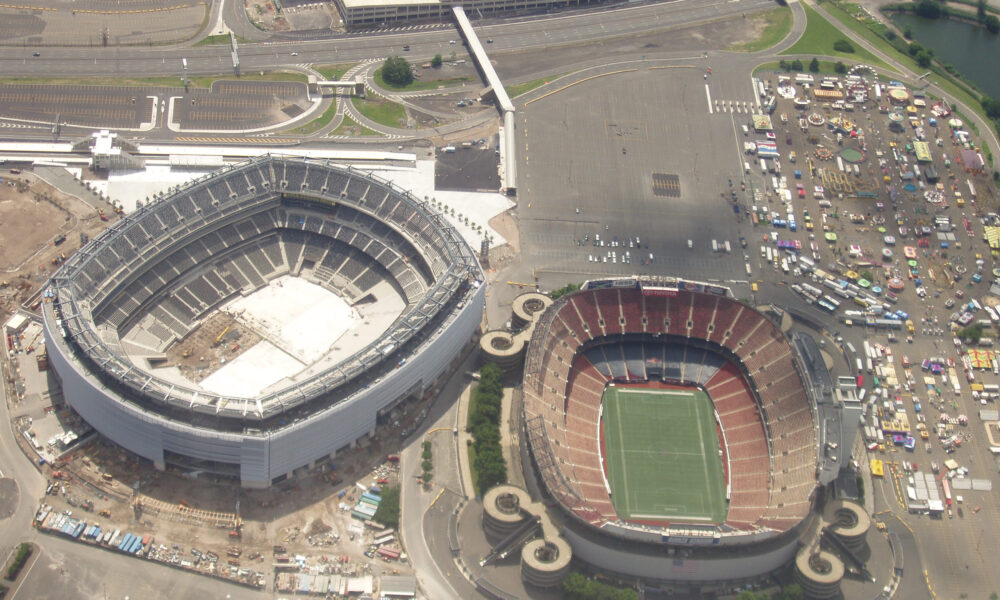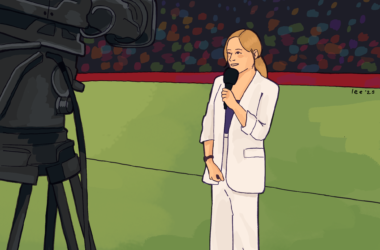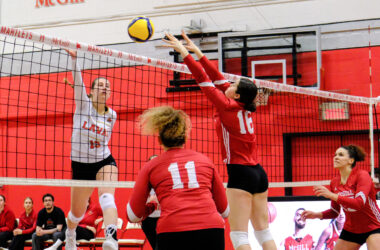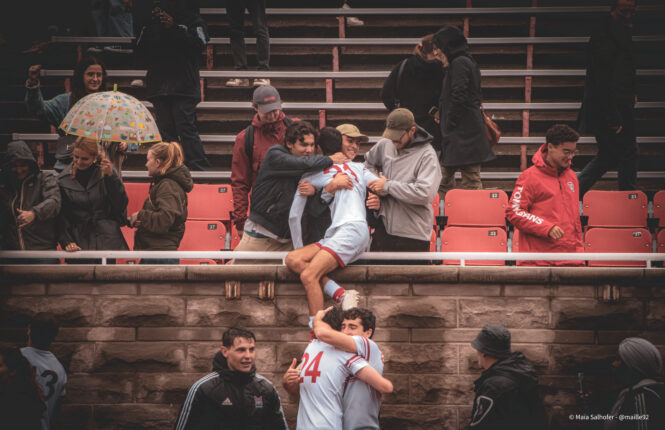In recent decades, city and state governments across North America have earmarked huge amounts of public funds for sports infrastructure projects. As part of the legislative session that ended on Mar. 1, Utah’s state lawmakers passed bills approving $900 million in funding for a baseball stadium and $500 million for a new hockey arena in Salt Lake City. Utah has neither a Major League Baseball (MLB) team, nor a National Hockey League (NHL) team, but the legislature was evidently not interested in letting present-day reality stop them from funding the potential presence of future big league teams.
Public subsidies for privately-owned sporting facilities have been a perennial headache for elected officials. Privately-owned men’s sports teams threaten underfunded municipal governments with relocation if they do not receive generous financial packages to fund exorbitant stadium infrastructure plans complete with incorporation into public transport systems, resulting in a humiliating ‘race to the bottom’ at taxpayer expense. Funds are committed to attract lucrative men’s major league professional sports teams, rather than invested into women’s, grassroots, or other levels of sports, and single-team stadiums are common, meaning the investment needed is often multiplied two or three times depending on the number of teams a city has.
Governments have allotted eye-watering amounts of public dollars to build stadiums in recent years. These subsidies include building new facilities at the taxpayers’ expense for existing teams that already have functioning stadiums. New stadiums are built to increase profitability as they contain higher percentages of more lucrative seating, such as luxury suites. These profits then flow into the pockets of ownership groups rather than back to the city or local community. If these stadiums aren’t full, franchises will often leave regardless of investment, hoping to increase profits in other markets. For instance, the state of Tennessee and the city of Nashville are contributing $500 million and $760 million respectively to a new stadium for the National Football League’s (NFL) Tennessee Titans. The Buffalo Bills scored $850 million in funding from their state and county for a new stadium. Oklahoma City residents passed an $850 million funding package to replace a 22-year-old basketball arena in a public referendum that totalled 58,000 votes. The list could go on, but the pattern is clear.
Hidden costs, invisible benefits
In negotiations for public subsidies, team owners typically cite the community benefits that these infrastructure projects can provide. Friends and families can create lifelong memories at the live events these stadiums host. The argument that communities need these facilities in the same way they need public swimming pools, libraries, and museums is understandable.
The problem lies in the staggering dollar amounts contributed to these facilities—especially in cases where infrastructure already exists. When large-scale sports infrastructure projects are funded to the tune of hundreds of millions of dollars but governments leave roads and bridges in disrepair, fail to provide adequate support to underfunded school systems, and neglect entire networks of overcrowded, short-staffed hospitals, officials are failing those they are elected to serve.
Prospective owners claim that tangible benefits for communities and governments come in the form of an increase in economic activity and tax revenue as a result of these projects. They suggest that tourists will occupy hotel beds, eat at restaurants, and contribute to the local economy when they are in town for sporting events and concerts. However, studies have shown that the economic impact of tourists visiting a city specifically for a single live event is negligible, and, in most cases, those tourists would still visit and be contributing to the local economy in other ways.
The environmental impacts of sports stadiums are almost never considered. Stadiums, such as Los Angeles’s SoFi stadium, are often built on land at the fringes of urban areas which previously were green spaces. These stadiums require transportation infrastructure built with public funds, and result in emissions from fans driving cars. Despite stadiums becoming increasingly energy efficient, huge amounts of energy remain necessary to power operations, and tonnes of waste are created with each event. Increasingly, teams such as Everton in the Premier League are choosing to build new stadiums rather than update old ones, as Liverpool did with Anfield. Concrete production and construction generate huge amounts of carbon dioxide, and in a climate crisis we must ask ourselves: Is this really what we want to spend emissions on?
Breaking ground by sharing grounds
While teams may find the prospect of operating their own facilities appealing for the bottom line, they should consider using existing facilities or holding their events in venues that are already being used by other local teams. For instance, basketball and hockey arenas are often shared—as is the case for soccer and football stadiums—as the seating configuration is similar enough for those sports’ purposes. Yet there are many cases where soccer-specific stadiums are being built for Major League Soccer (MLS) teams in cities where an NFL or college football stadium already exists, including New York City and Miami. While team owners in those cities are funding their projects with private dollars, it is estimated that the deal in New York will cost $516 million in lost property tax revenue over 49 years by leasing the land to developers instead of selling it, while the Miami club is benefiting from a no-bid lease agreement. Teams are also looking for considerable sums to fund renovation projects or, worse yet, ditch their existing stadiums, even in cases like Oklahoma City’s, where the stadium is not yet 30 years old. In these cases, public funding packages yield no added community benefit, as adequate infrastructure already exists.
Not every city needs to play in the big leagues
North American sports franchises are notorious for moving cities as soon as it is no longer lucrative to remain in place. The reality is that not every city has a market for a major team in some of the most lucrative leagues in the world. As soon as attendances drop, a franchise’s viability is at risk—a fact that supporters of the Oakland Athletics and the Winnipeg Jets know all too well. The value of sport to local communities is not in question: But does every city need an NHL team? Utah is a state of 3.4 million people which is already home to the NBA’s Utah Jazz and MLS’s Real Salt Lake. According to this 2014 survey by the University of Utah, the most popular sport is college football. Are state residents really clamouring for more professional men’s sports teams?
When franchises leave, it is local communities who lose. Afterall, the capital investment is transitory: Ownership groups do not need to take on expensive stadium build costs or deal with the legacy that these crumbling concrete monsters leave behind in their communities. Ownership groups also do not feel the traumatic repercussions which reverberate throughout communities when much-loved teams leave. Elite sports franchises can be synonymous with community investment but not intrinsically so.
Most cities do not have the capacity to support more men’s major professional sports leagues: Athletes are overworked, and more and more games are being fit into increasingly tight schedules. We need more investment outside of the status quo: into burgeoning women’s sports leagues such as the NWSL and the WNBA, into second and third division development leagues, into grassroots sports, and into youth development pathways. The strength of the National College Athletics Association (NCAA) means that many development leagues are little more than an afterthought. However, for sports such as baseball and hockey, minor league teams are vital community institutions. One of those minor league teams is located just south of the border, in Burlington, Vermont, where the Lake Monsters, a former affiliate of the Montreal Expos, continue to honour their parent club’s legacy during a theme night, taking the field in Expos colours. In other countries with competitive league pyramids decided by promotion and relegation, small town teams may never get to the top, and that is fine. They are proud community institutions with deep roots. When they do make it to the top, as Luton Town did last season, it means all the more, as the fairytale has come true.
The last thing we need is for more municipalities to be held hostage by corporate greed. Private ownership groups bully elected officials by leveraging their franchise mobility against the best interests of communities, wrecking everything in their path. It is time for local governments to be brave and stand up to private ownership groups for the benefit of those who really matter—the supporters. The Green Bay Packers are living proof this model can be achieved even in North America. After all, a team is not a team without a community rooting it firmly in place.









